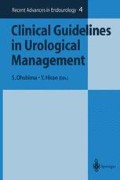Summary
Evidence-based medicine is a process approach to secure a standardized and optimal medical intervention for a given disease state based on a certain methodology. The results of evidence-based medicine activities are usually expressed as clinical practice guidelines (CPGs). CPGs should be evaluated at three different levels: the validity in selecting the disease, the validity of the CPG development process, and the impact of CPGs on medicine. Validity in selecting the disease means that it is justified to invest resources to develop the CPG for the disease. The disease will be prioritized and it will be regarded as worth investing resources to develop the CPG for the disease if: medical interventions by physicians vary, a new effective medical intervention that has been developed is not used widely, the disease affects many patients or has high costs of treatment, or the disease imposes a high risk on patients. A CPG should be developed by proper processes, and validated by other persons later. Validity, reliability and reproducibility, clinical applicability, clinical flexibility, clarity, a multidisciplinary process, scheduled review, and documentation are required for good CPGs. CPGs can change two criteria for evaluating the quality of health care, process and outcome, in two directions: standardization and improvement. Showing the impact of CPGs takes a great effort and is difficult to do, and only limited reports are available. Evidence-based medicine is an effective tool, but it is a process approach and the impact of the process approach should be measured using a highly useful standard: the outcome.
Access this chapter
Tax calculation will be finalised at checkout
Purchases are for personal use only
Preview
Unable to display preview. Download preview PDF.
References
Sackett DL (1989) Rules of evidence and clinical recommendations on the use of antithrombotic agents. Chest 95(2) Suppl: 2S–4S
Drummond MF, O’Brien B, Stoddart GL, Torrance GW (1997) Methods for the economic evaluation of healthcare programmes, 2nd edn. Oxford University Press, Oxford
Donabedian A (1966) Evaluating the quality of medical care. Milbank Mem Fund Q 44(3) Suppl: 166–206
Field MJ, Lohr KN (eds) (1992) CPGs for clinical practice. National Academy Press, Washington, DC
Author information
Authors and Affiliations
Editor information
Editors and Affiliations
Rights and permissions
Copyright information
© 2003 The Japanese Society of Endourology and ESWL
About this chapter
Cite this chapter
Hasegawa, T. (2003). Evaluation of Clinical Practice Guidelines. In: Ohshima, S., Hirao, Y. (eds) Clinical Guidelines in Urological Management. Recent Advances in Endourology, vol 4. Springer, Tokyo. https://doi.org/10.1007/978-4-431-65944-0_2
Download citation
DOI: https://doi.org/10.1007/978-4-431-65944-0_2
Publisher Name: Springer, Tokyo
Print ISBN: 978-4-431-65946-4
Online ISBN: 978-4-431-65944-0
eBook Packages: Springer Book Archive

